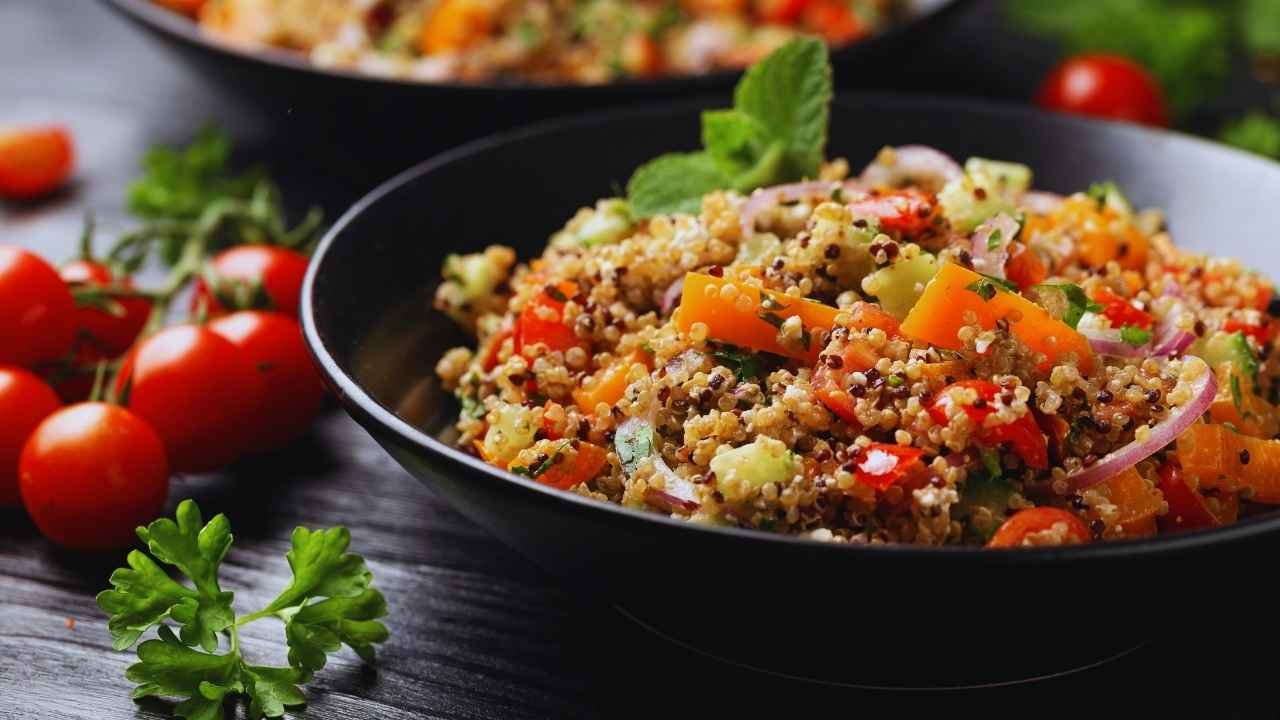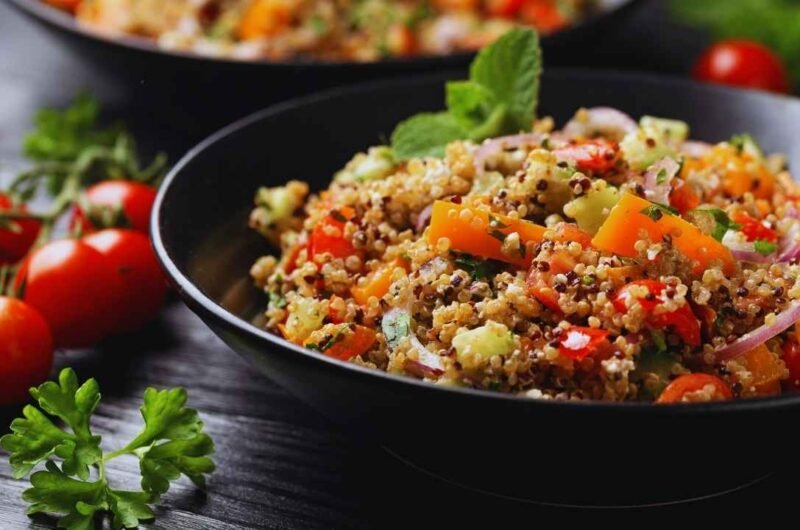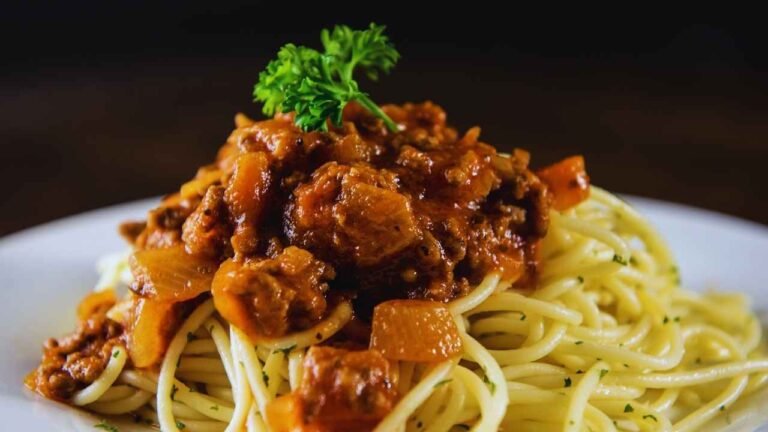How to Make Authentic Lebanese Mujadara: A Foolproof Recipe for Perfect Lentils & Rice
Did you know Lebanese mujadara recipe has survived the test of time for more than 800 years? This kind of staying power isn’t simply about tradition — it’s a tribute to the dish’s unique versatility and great value.
In addition to being a “perfect protein,” this classic combination of lentils and rice is one of the cheapest things you can make. In fact, a single batch serves as many as 8 as an entree or 16 as a side, which is why it’s well suited to everything from family dinners to gatherings.
Authentic Lebanese mujadara shines, no matter if you serve it warm, room temperature or cold, with reliable flavor and nutrition. The secret is in the perfectly caramelized onions that take 30 to 40 minutes to reach their distinctive color, and the specific ratio (1:1) between lentils and rice that gets you right texture.
Want to learn to make this classic dish like a pro? Here’s every step for making the mujadara of your dreams.
Essential Ingredients for Authentic Lebanese Mujadara
The most important part of succeeding in making authentic Lebanese mujadara is choosing the right ingredients. All of these ingredients come together to yield just the right combination of texture and flavor.
Choosing the Right Lentils
Choosing the right lentils for this Lebanese mujadara recipe. Specifically, you want small, hard brown lentils that hold their shape during cooking. Here are your best options:
- Regular brown lentils (hold their shape but don’t get mushy)
- Spanish Pardina lentils (great shape retention)
- Good Substitute Option: Green lentils
And steer clear of red or yellow lentils because they cook down quickly and turn mushy in an uninspiring way.
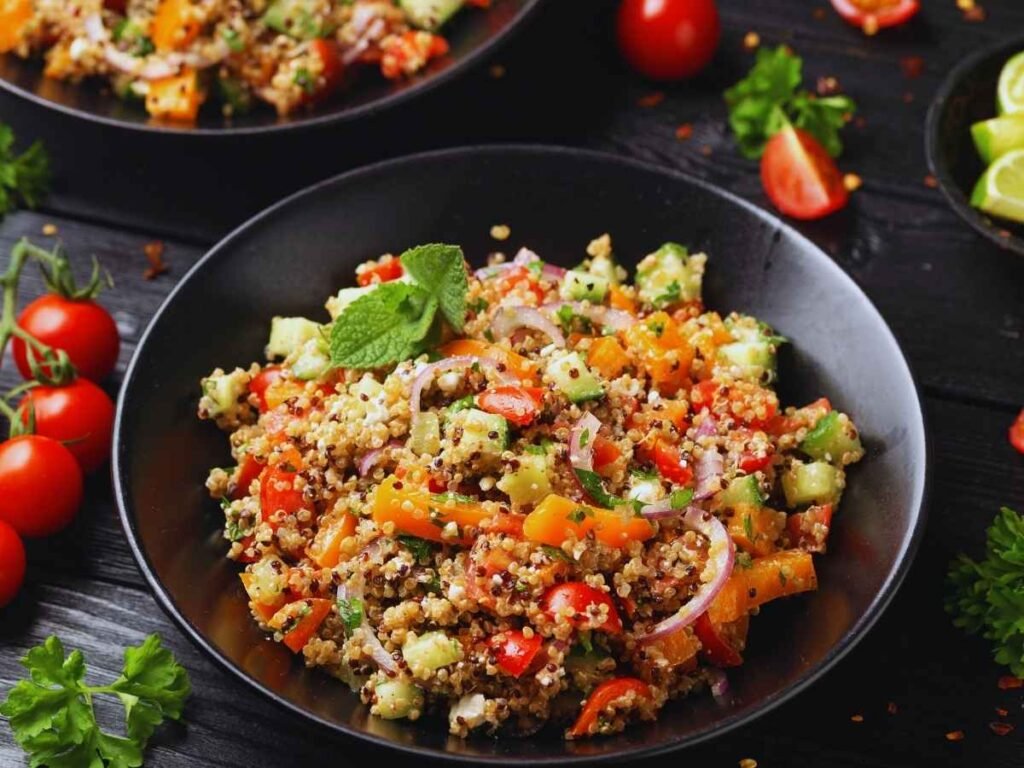
Rice Selection Tips
The type of rice used will most affect the final texture of the mujadara. So here’s a rundown of the main options to consider:
| Rice Type | Texture Result | Notes |
|---|---|---|
| Basmati | Fluffy, separate grains | Most traditional choice |
| Short grain | Stickier consistency | Traditional Lebanese variety |
| Brown rice | Heartier texture | Requires longer cooking time |
Understanding Onion Types
Your choice of onions in the mujadara deserves its own monologue. First, select large yellow onions; steer clear of the sweet varieties. To get the authentic flavor profile, you will need 4 to 6 cups of sliced onions.
Yellow onions are particularly essential because they strike that perfect balance of flavor when caramelized. Plus, they add not only to the taste, but also to the signature golden color of classic mujadara.
Mastering the Caramelized Onions
OK, the art of cooking onions until they caramelize is a must for Lebanese-style mujadara. Well at first glance you might believe it a easy technique, however the fact is that getting it right requires skill and patience.
Temperature Control Techniques
Proper heat management is crucial for perfect caramelization. Start with medium-high heat, then reduce to medium-low once the onions begin to soften. Here’s how to manage the temperature stages:
| Stage | Temperature | Duration | Action |
|---|---|---|---|
| Initial | Medium-high | 10-15 min | Softening |
| Middle | Medium-low | 20-30 min | Browning |
| Final | Low | 5-10 min | Deep caramelization |
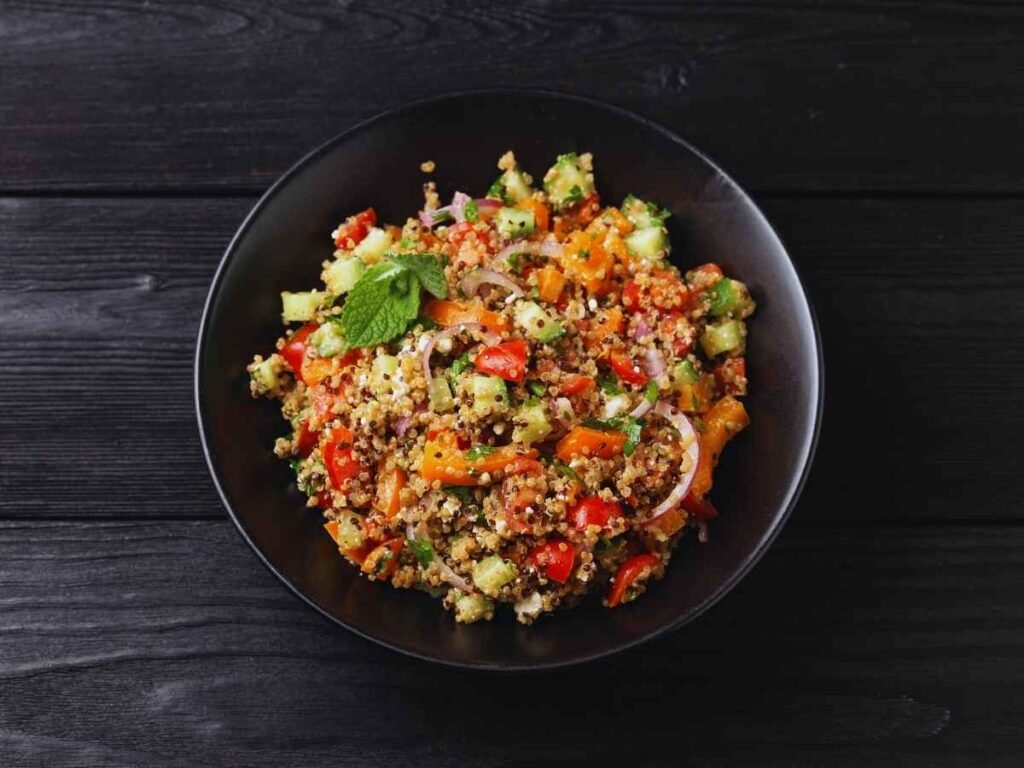
Common Mistakes to Avoid
Beware these key mistakes that might make or break your Lebanese mujadara:
- Turning the heat way up because you think that will speed things up
- Not deglazing the pan when brown bits develop
- Crowding the pan, which results in steaming rather than caramelizing
- Not allowing onions to brown enough: They should be almost burnt, dark brown, to be perfect.
If you see the onions start to stick to the pan, add a splash of water to deglaze. This will thus incorporate that tasty fond back into your onions. Keep in mind that not all the onions will be on the verge of burning, which is fine, but fully burnt onions will make your mujadara taste bitter.
Step-by-Step Cooking Method
To get the ultimate Lebanese mujadara recipe right, you do need to be precise and take care. Let’s go step by step through each important part of cooking to get that texture and taste right.
Par-cooking the Lentils
For one thing, you start with par-cooking your lentils for perfect tenderness. Put the lentils into a saucepan and cover with 2 cups of water, plus a small pinch of salt. Boil the mixture over high heat and lower to a simmer. The lentils should be just slightly al dente, about 7 minutes.
Pro tip: When par-cooking the lentils, be sure to leave them in their pot with the cooking water — liquid that will deepen the flavor of your final dish.
Rice and Lentil Timing
The key to perfect mujadara is timing your cooking just so. Once your lentils are par-cooked, add them and their cooking liquid to your caramelized onion mixture. You’ll add your rice at this stage too.
Your cooking sequence should follow these steps:
- Stirr in rice with onion-lentil mix
- Sprinkle with black pepper and cumin
- Cover and bring to a boil
- Reduce heat to low
- Cover and cook for 20-25 minutes until tender
Water Ratio Secrets
Getting the right proportions of water is crucial for the perfect consistency. Here’s how to water them according to the ratio:
| Ingredient | Water Ratio | Cooking Stage |
|---|---|---|
| Initial Lentils | 1:2 | Par-cooking |
| Final Mixture | Additional 1.5 cups | Complete cooking |
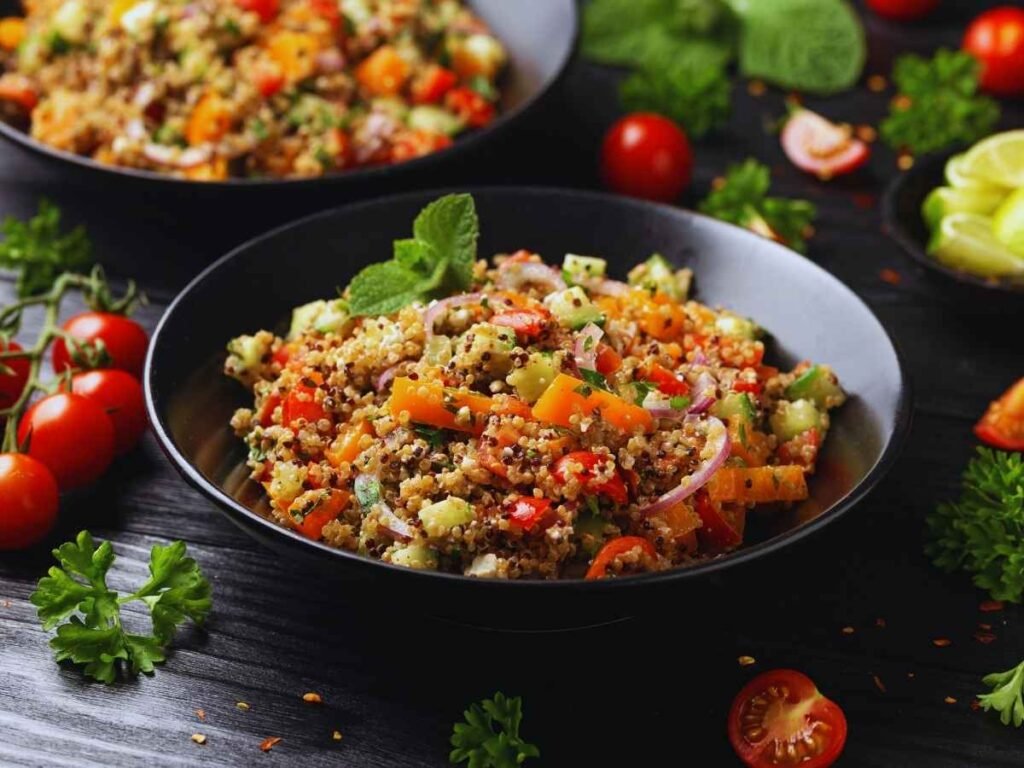
Troubleshooting Your Mujadara
Even veteran cooks sometimes find their Lebanese mujadara recipe cause for dismay. That said, the most common problems have simple solutions that can help you to get your dish just right.
Fixing Mushy Texture
Your cooking method is the secret to mujadara that is not mushy. But cooking lentils and rice together has the ability to alter their respective textures. Here are some effective strategies to achieve a better result:
- Cook the rice and lentils separately and mix them in the end
- 1:15 ratio of rice to water
- If you are making lentils, use cold water to start.
Pro Tip: Stay away from red or orange lentils as they will create a naturally softer, mushier consistency.
Preventing Burnt Onions
To be sure, there is patience and attentive eye involved in getting a perfectly caramelized onion. Your guide to temperature control is here.
| Stage | Action | Duration |
|---|---|---|
| Initial | High-medium heat | First few minutes |
| Main cooking | Lowest setting | Remaining time |
| Stirring | Every few minutes | Throughout process |
Adjusting Seasoning
These days, if your mujadara is blah, it’s usually not for absence of spice, but simply for lack of roasted onion. Thus, here are some changes to consider:
- Taste and add more salt as needed throughout cooking
- Still, add just a smidge of cumin so it doesn’t dominate the dish
- Rest the dish for 10 minutes, then add final seasoning
Note: If you’re not using traditional Lebanese spices, use very little seasoning. Before long, you’ll realize that properly caramelized onions constitute most of the flavor in the dish.
If your first try isn’t perfection, remember, mujadara usually tastes better the day after you make it. You can always increase the water ratio the next time you prepare it — many cooks use a range of 4-4.5 cups of water instead of the standard amount.

Perfect Texture and Consistency
To get the texture just right in your Lebanese mujadara recipe, you need to pay attention to certain details at the final stages of cooking. The first thing to keep in mind, truly great mujadara is single grains of rice and lentils that don’t clump.
Testing for Doneness
Your mujadara should have some al dente texture, and the grains should be separate. Here’s how to test for doneness:
| Texture Indicator | What to Look For |
|---|---|
| Rice | Tender but firm, not mushy |
| Lentils | Cooked through, holding shape |
| Overall Mix | Separate grains, pilaf-like |
Resting Period Importance
The resting stage, of course, is key to the perfect texture. These are the crucial things to do after cooking:
- Remove the pot from heat
- Drape a kitchen towel over the top to catch steam
- Cover with lid
- Allow to rest, undisturbed, for 10 minutes
This resting time basically helps moisture integrate, creating a perfect texture for your Lebanese mujadara recipe. The steam gets absorbed during this time, so preventing too much moisture that would make your dish soggy.
Achieving Separate Grains
If you want the authentic Lebanese mujadara with distinct grains, these tried and true strategies might help you:
- Try not to stir the lentils and rice too much, lest they break.
- Use a heavy-bottomed pot for even heat distribution
- After resting, fluff the grains gently with a fork
Do you mind if I say well done and then carefully get rid of all the extra water, if left, after cooking? So when you’re ready to serve, each element should keep its individual identity yet come together in unison in the dish.
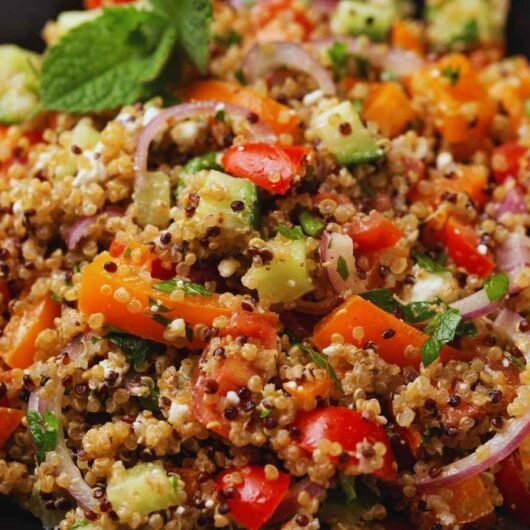
Your mujadara should finally display the following texture:
- Lentils that do not mush to mushiness and hold their shape
- Individual grains of rice that are distinct and fluffy
- A pilaf-like denseness all the way through
For storage and reheating, your Lebanese mujadara holds up for five days when kept in an airtight container. For reheating: heat with a splash of olive oil and water to keep moist and to keep the grain separation.
Conclusion
Lebanese mujadara is a proof of culinary perfection by simplicity. And this centuries-old food can still be nutritious and delicious if prepared properly.
Success with mujadara comes down to three important factors: choosing the right ingredients, perfecting onion caramelization, and keeping an accurate clock. Keep in mind that authentic mujadara requires brown lentils, a very nice high–quality rice, and yellow onions.
There’s plenty of waiting time when making this recipe, particularly for the onion caramelization process, which takes 45 minutes, but patience is handily rewarded. And the proper texture, with careful attention to water ratios and cooking temperatures, is distinct, perfectly cooked grains.
With these techniques and trouble-shooting tips in mind, you now have the makings of a successful Lebanese favorite. And above all, give yourself time to practice – every batch gets you closer to mastering this economical but impressive dish that has wowed generations of food lovers.
How to Make Authentic Lebanese Mujadara: A Foolproof Recipe for Perfect Lentils & Rice
Course: DinnerCuisine: LebaneseDifficulty: Easy8
servings15
minutes45
minutes350
kcalMujadara is a traditional Lebanese dish of lentils, rice and fried onions. It’s an easy, budget-friendly, protein-rich meal boasting a big flavour. Serve warm or at room temperature, or even chilled for a delicious meal any day!
Ingredients
For the Mujadara:
1 cup brown lentils (regular or Spanish Pardina)
1 cup basmati or short-grain rice
4 cups water (divided)
4 large yellow onions, thinly sliced
½ cup olive oil
1 teaspoon ground cumin
½ teaspoon black pepper
1 teaspoon salt (or to taste)
Optional Garnishes:
Chopped fresh parsley
Lemon wedges
Greek yogurt or tahini sauce
Directions
- Caramelize the Onions: Heat olive oil, sauté onions until deep brown (40-45 min), set half aside for garnish.
- Cook the Lentils: Rinse lentils, boil with 2 cups water, simmer until slightly tender (7-10 min).
- Prepare the Rice: Rinse and soak rice for 20 min, then drain.
- Combine Ingredients: Add rice, caramelized onions, cumin, black pepper, salt, and 2 cups water to the lentil pot.
- Simmer & Rest: Boil, then cover and cook on low for 20-25 min; let it rest for 10 min.
- Fluff & Serve: Fluff with a fork, garnish with caramelized onions, parsley, and lemon wedges.
Recipe Video
Notes
- Cook with the kind of fluffy, brown lentils that retain their texture, don’t churn them too much — and let the dish sit for 10 minutes before you serve. Get those onions nicely caramelized to get the full depth of flavour of this dish.
FAQs
Q1. What is Mujadara and where does it come from?
Mujadara is a Middle Eastern staple of lentils and rice, often topped with caramelized onions. While most often thought of as Lebanese fare, its roots trace back to Iraq, where the first known recipe for it appeared in a 13th-century Iraqi cookbook.
Q2. How long can I store Mujadara in the refrigerator?
Mujadara will keep well, in an airtight container in the refrigerator, for five days. To reheat without it getting dry, add a little water and warm in your favorite method.
Q3. Is Mujadara a nutritious meal option?
Yes, Mujadara (Mujadarrah, or whatever it’s called) is plenty healthy. It is extremely high in protein and fiber, specifically from lentils and rice. As a hearty vegetarian option, this meal fuels you with longer-lasting energy while also keeping your digestive system happy, making it as tasty as it is healthy for you.
Q4. What are the key ingredients for authentic Mujadara?
The core ingredients of authentic Mujadara are small brown lentils, rice (usually basmati or short-grain) and large yellow onions. The choice of these particular ingredients is key to getting the authentic texture and flavor profile of the dish.
Q5. How do I achieve the perfect texture in Mujadara?
To achieve the perfect texture in Mujadara, cook the lentils and rice to an al dente consistency, ensuring they remain separate and distinct. After cooking, let the dish rest covered with a kitchen towel for about 10 minutes to allow even moisture distribution. Finally, fluff gently with a fork before serving to maintain the individual character of each grain.

